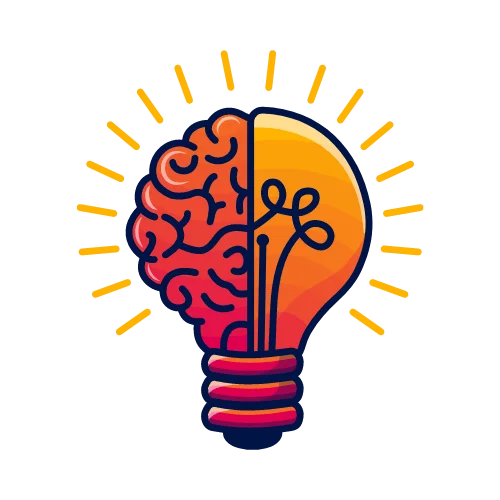Which one better Artificial intelligence (AI) or Virtual intelligence (VI)?
Which one better Artificial intelligence (AI) or Virtual intelligence (VI)?
Read lessSign up to our innovative Q&A platform to pose your queries, share your wisdom, and engage with a community of inquisitive minds.
Log in to our dynamic platform to ask insightful questions, provide valuable answers, and connect with a vibrant community of curious minds.
Forgot your password? No worries, we're here to help! Simply enter your email address, and we'll send you a link. Click the link, and you'll receive another email with a temporary password. Use that password to log in and set up your new one!
Please briefly explain why you feel this question should be reported.
Please briefly explain why you feel this answer should be reported.
Please briefly explain why you feel this user should be reported.
Which one better Artificial intelligence (AI) or Virtual intelligence (VI)?
Which one better Artificial intelligence (AI) or Virtual intelligence (VI)?
Read lessWhat is low code programming?
What is low code programming?
Read lessLow-code programming is a modern software development approach that allows users to create applications with minimal hand-coding. This methodology utilizes visual interfaces, drag-and-drop functionality, and pre-built components to streamline the development process, making it accessible to both proRead more
Low-code programming is a modern software development approach that allows users to create applications with minimal hand-coding. This methodology utilizes visual interfaces, drag-and-drop functionality, and pre-built components to streamline the development process, making it accessible to both professional developers and non-technical users, often referred to as “citizen developers.”
Low-code programming represents a significant shift in how software is developed, emphasizing speed, accessibility, and collaboration while allowing organizations to meet their digital transformation goals more effectively.
See lessIs Ratan Tata’s legacy truly as inspiring as it seems?
Is Ratan Tata’s legacy truly as inspiring as it seems?
Read lessRatan Tata is widely celebrated as one of India’s most respected and influential business leaders, and much of his reputation is grounded in his unique approach to business and philanthropy. His contributions extend beyond profitability, impacting areas like social welfare, ethics, and national pridRead more
Ratan Tata is widely celebrated as one of India’s most respected and influential business leaders, and much of his reputation is grounded in his unique approach to business and philanthropy. His contributions extend beyond profitability, impacting areas like social welfare, ethics, and national pride, which is why he’s often held in high regard. However, the narrative of greatness often simplifies complex realities. Here are some nuanced aspects to consider:

Ratan Tata’s reputation is based on genuine contributions to India’s economy and society, although, like any leader, he faced challenges and controversies. His legacy is complex, encompassing both the achievements and the lessons learned from his ambitions.
See lessWhich of the following is a key component of a neural network?
Which of the following is a key component of a neural network?
Read lessThe key components of a neural network encompass various elements that contribute to its functionality. Here’s a breakdown of the options provided: Neurons and Synapses: Neurons are indeed the fundamental units of a neural network, analogous to biological neurons, and synapses represent the connectiRead more
The key components of a neural network encompass various elements that contribute to its functionality. Here’s a breakdown of the options provided:
Neurons and Synapses: Neurons are indeed the fundamental units of a neural network, analogous to biological neurons, and synapses represent the connections between them, usually weighted to signify their importance.
Layers and Nodes: Neural networks are structured in layers, including input, hidden, and output layers. Each layer consists of nodes (or neurons), which process inputs and pass outputs to subsequent layers.
Recurrent Units and Dropout: Recurrent units are specific to recurrent neural networks (RNNs), which are designed for sequential data. Dropout is a regularization technique used to prevent overfitting by randomly dropping units during training.
Given that all these elements play significant roles in different types of neural networks, the correct answer is: All of the above.
See less
The comparison between Artificial Intelligence (AI) and Virtual Intelligence (VI) often arises from the rapidly evolving nature of technology. Both concepts aim to replicate or simulate certain aspects of human intelligence, but they differ in scope, application, and underlying principles. ArtificiaRead more
The comparison between Artificial Intelligence (AI) and Virtual Intelligence (VI) often arises from the rapidly evolving nature of technology. Both concepts aim to replicate or simulate certain aspects of human intelligence, but they differ in scope, application, and underlying principles.
Artificial Intelligence (AI)
AI refers to the development of computer systems or machines that can perform tasks that typically require human intelligence. These tasks include reasoning, problem-solving, learning, perception, and language understanding. AI systems are designed to mimic cognitive functions such as decision-making and pattern recognition.
Virtual Intelligence (VI)
VI, on the other hand, is a less commonly discussed concept, often used in different contexts, including virtual assistants and simulations. It generally refers to systems designed to simulate intelligence in a specific, limited virtual environment. Unlike AI, which aims to emulate human intelligence broadly, VI is often narrower and used in virtual environments, where it can simulate specific tasks or interactions without aiming for the cognitive complexity of AI.
Key Differences
Which is Better?
The question of which is “better” depends on the context in which they are being used:
AI and VI serve different purposes and are suited for different contexts. AI is better for complex, real-world applications that require learning and adaptability, while VI can be ideal for more controlled, virtual tasks that don’t require the depth of intelligence that AI offers.
See less